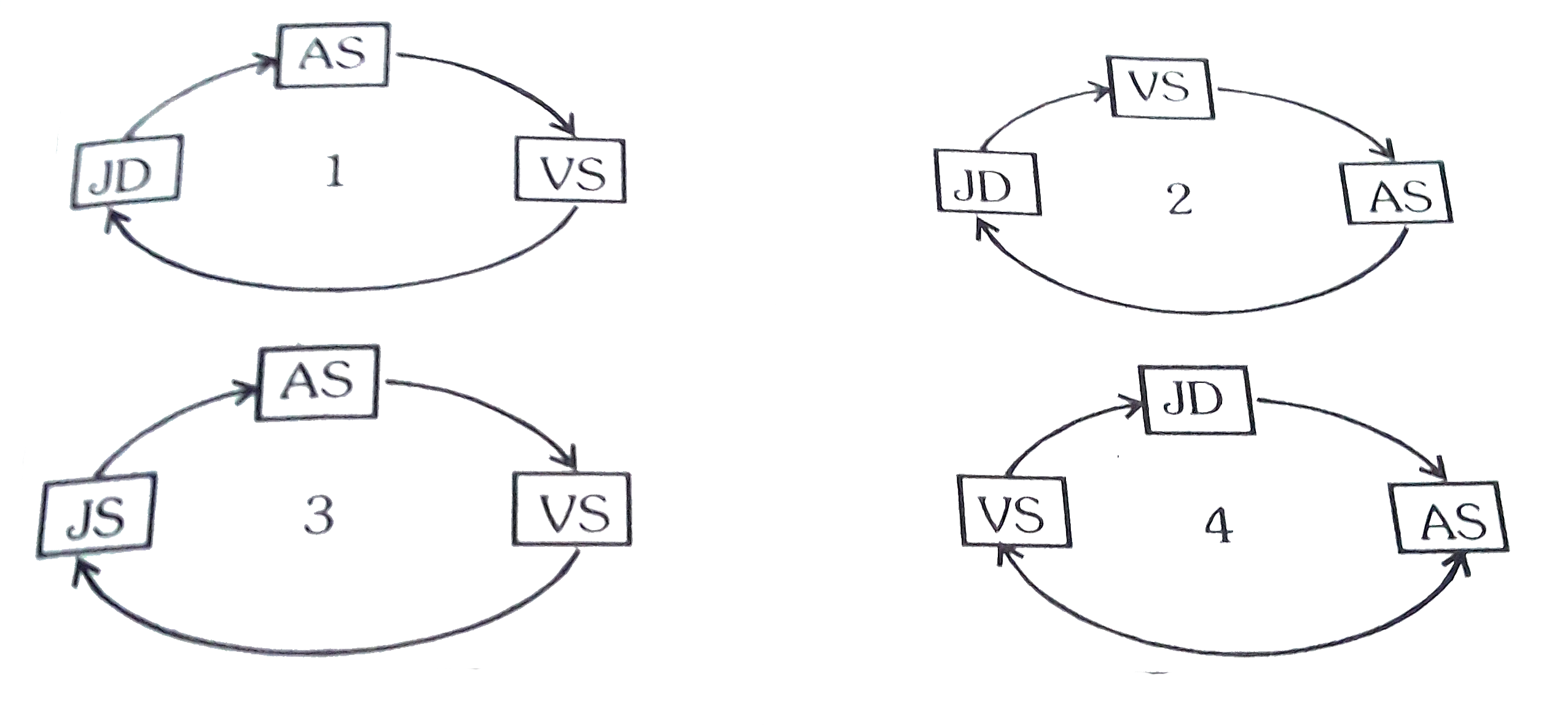Give schematic representation of Citiric acid cycle. Give its significance.
Step-by-Step Text Solution for the Citric Acid Cycle and Its Significance
1. Schematic Representation of the Citric Acid Cycle (TCA Cycle)
The Citric Acid Cycle, also known as the Tricarboxylic Acid Cycle (TCA Cycle) or Krebs Cycle, can be represented as follows:
1. Formation of Citrate:
- Acetyl-CoA + Oxaloacetate → Citrate
- Enzyme: Citrate Synthase
2. Conversion of Citrate to Isocitrate:
- Citrate → Isocitrate
- Enzyme: Aconitase
3. Oxidative Decarboxylation of Isocitrate:
- Isocitrate → Alpha-Ketoglutarate + CO₂
- Enzyme: Isocitrate Dehydrogenase
4. Oxidative Decarboxylation of Alpha-Ketoglutarate:
- Alpha-Ketoglutarate → Succinyl-CoA + CO₂
- Enzyme: Alpha-Ketoglutarate Dehydrogenase
5. Conversion of Succinyl-CoA to Succinate:
- Succinyl-CoA → Succinate + GTP (or ATP)
- Enzyme: Succinyl-CoA Synthetase
6. Conversion of Succinate to Fumarate:
- Succinate → Fumarate
- Enzyme: Succinate Dehydrogenase
7. Conversion of Fumarate to Malate:
- Fumarate → Malate
- Enzyme: Fumarase
8. Oxidation of Malate to Oxaloacetate:
- Malate → Oxaloacetate
- Enzyme: Malate Dehydrogenase
The cycle then repeats as Oxaloacetate combines with another Acetyl-CoA.
2. Significance of the Citric Acid Cycle
- Final Pathway of Oxidation: The Citric Acid Cycle is the final pathway for the oxidation of carbohydrates, fats, and proteins. It allows for the complete breakdown of these macromolecules to produce energy.
- ATP Production: It is a major source of ATP production in cells. The energy released during the cycle is captured in the form of ATP (or GTP).
- Role in Metabolism: The cycle plays a crucial role in gluconeogenesis, which is the synthesis of glucose from non-carbohydrate sources. This is essential for maintaining blood glucose levels.
- Fatty Acid Metabolism: Fatty acids undergo beta-oxidation to form Acetyl-CoA, which then enters the Citric Acid Cycle, highlighting its importance in fat metabolism.
- Health Implications: Genetic defects in the enzymes of the Citric Acid Cycle can lead to neural damage, indicating its importance in overall health and functioning.
- Acetyl-CoA + Oxaloacetate → Citrate
- Enzyme: Citrate Synthase
- Citrate → Isocitrate
- Enzyme: Aconitase
- Isocitrate → Alpha-Ketoglutarate + CO₂
- Enzyme: Isocitrate Dehydrogenase
- Alpha-Ketoglutarate → Succinyl-CoA + CO₂
- Enzyme: Alpha-Ketoglutarate Dehydrogenase
- Succinyl-CoA → Succinate + GTP (or ATP)
- Enzyme: Succinyl-CoA Synthetase
- Succinate → Fumarate
- Enzyme: Succinate Dehydrogenase
- Fumarate → Malate
- Enzyme: Fumarase
- Malate → Oxaloacetate
- Enzyme: Malate Dehydrogenase
Topper's Solved these Questions
- RESPIRATION IN PLANTS BOOK - MODERN PUBLICATIONCHAPTER - RESPIRATION IN PLANTS EXERCISE - REVISION EXERCISES (Long Answer Questions)
5 Videos
- RESPIRATION IN PLANTS BOOK - MODERN PUBLICATIONCHAPTER - RESPIRATION IN PLANTS EXERCISE - COMPETITON FILE OBJECTIVE TYPE QUESTIONS (A. MULTIPLE CHOICE QUESTIONS)
30 Videos
- RESPIRATION IN PLANTS BOOK - MODERN PUBLICATIONCHAPTER - RESPIRATION IN PLANTS EXERCISE - REVISION EXERCISES (Very Short Answer Questions)
16 Videos
- PLANT KINGDOM BOOK - MODERN PUBLICATIONCHAPTER - PLANT KINGDOM EXERCISE - Chapter Practice Test
16 Videos
- STRUCTURAL ORGANISATION IN ANIMALSBOOK - MODERN PUBLICATIONCHAPTER - STRUCTURAL ORGANISATION IN ANIMALSEXERCISE - CHAPTER PRACTICE TEST (Section -E)
2 Videos
Similar Questions
Give the graphic representation of citric acid cycle.
View SolutionGive schematic representation of carbon cycle.
View SolutionGive the schematic representation of an overall view of Krebs cycle.
View SolutionGive the schematic representation of glycolysis.
View SolutionGive the schematic representation of glycolysis?
View Solutionthe wrong representation of cardia cycle.

View SolutionGive the schematic representation of TCA cycle (Krebs cycle).
View SolutionWhat is apolysis? Give its significance.
View SolutionGive the diagrammatic representation of ETS.
View SolutionDefine dipole moment. Give its significance.
View Solution
